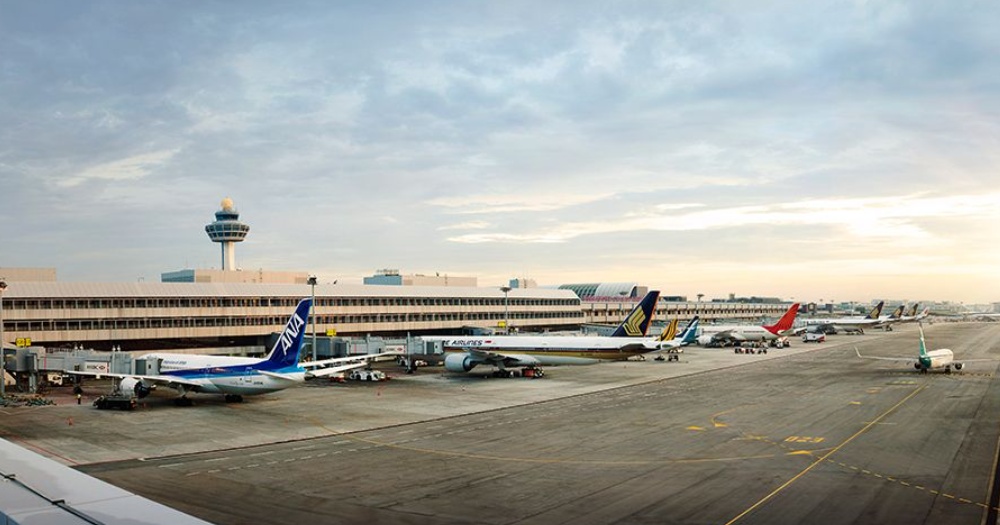With global travel slowing to a halt across the world due to the ongoing Covid-19 pandemic, the travel industry is one of the hardest-hit.
Hotels have received a brief respite from the crisis, due to the need for accommodations to house people on Stay-Home Notice (SHN) and the recent surge in demand for staycations.
But other industries have not been so fortunate.
According to Statista, the number of scheduled flights worldwide is down by almost 50 per cent for the week starting September 14, 2020, compared to the same period last year.
For a country like Singapore, with no domestic flights, the numbers are even worse.
The Singapore Airlines (SIA) Group, which consists of SIA, SilkAir and Scoot, predicted that by the end of November 2020, passenger capacity will reach approximately 11 per cent of its pre-Covid-19 levels.
There is no sugarcoating it; the airlines are in a crisis like never before, given that global air travel is only expected to return to pre-pandemic levels in 2024.
Bailouts are unsustainable for airlines
If the situation is so bad, then how are airlines still surviving?
Across the world, many airlines, especially those who are national carriers, are relying on bailouts of some kind to remain afloat.
Air France-KLM received 10 billion euros (S$16 billion) from both the French and Dutch governments, while German flag carrier Lufthansa was given 9 billion euros (S$14.4 billion) to save it from collapse.
Similarly, SIA raised S$8.8 billion through a series of share sales, which was backed by existing shareholder Temasek Holdings.
However, there is already a clear indication that bailouts alone will not be enough.
In April 2020, 10 U.S. airlines received a total of US$25 billion (S$34 billion) from the U.S. government for payroll support, and another S$34 billion in loans.
Four months later, U.S. politicians are already pushing for a second airline bailout, in order to preserve jobs, despite airlines laying off thousands of workers.
While bailouts may help airlines temporarily, for most governments, it is unsustainable to continue giving handouts until pandemic is over, given that protracted nature of the crisis.
Airlines have begun innovating to raise revenue
Some airlines have quickly sprung to their feet, and attempted to find new ways of securing revenue.
Such as 'flights to nowhere', sightseeing tours and other onboard dining experiences.
Earlier in July, Taiwan-based China Airlines offered 'fake' flights for locals, where participants were issued a boarding pass, and could board the plane, although the plane remained on the ground the entire time.
Australia flag carrier Qantas also restarted 12-hour sightseeing flights to Antarctica, which will take off from Australia, and return to the same airport after the trip.
Royal Brunei Airlines also launched their own flights to nowhere, allowing their customers to dine in the air, while getting an aerial view of famous landmarks in Brunei and Borneo.
Earlier this month, SIA joined the slew of other airlines offering flights to nowhere, and announced that it is planning to do the same by the end of October 2020.
Each flight would take take about three hours and depart from and land in Changi Airport. The airline has not released its pricing for the intended flights yet.
There are unlikely to be many 'flights to nowhere'
It is unlikely that many of such flights to nowhere will be scheduled, based on other airlines.
While Taiwan-based Eva Air launched a highly successful flight to nowhere on August 8, which was sold out, these flights are not frequent.
While Royal Brunei Airlines and Japan's All Nippon Airways also replicated such flights, the total number of flights to nowhere also remained low.
So why even have it at all?
If it is unlikely to generate serious revenue, then why even do it?
There are some benefits from doing so.
For instance, this could be a way for airlines to demonstrate that they are innovating in order to improve their own branding, or as a way for their brand presence to remain current.
The point on branding, however, is debatable since aviation analysts were quoted by Today saying that flights-to-nowhere may in fact result in a hit to SIA's corporate image given criticism from environmentally conscious groups.
However, there is also a practical benefit for launching such flights -- it is a way for airlines to ensure that their pilots remain up to speed with their skills.
According to CNN, there are regulations that stipulate a pilot must have successfully carried out three takeoffs and landings within the previous 90 days, in order to remain qualified to fly.
While simulators exist, it is often ideal for pilots to retain actual flying experience, especially if the crisis is going to be a protracted one.
It is also a way for airlines to make use of the aircraft and crew that would otherwise be idle.
Airlines have to do something to keep up brand awareness
Truth be told, operating flights to nowhere alone are unlikely to make a dent in the various airlines' operations.
Independent aviation analyst Brendan Sobie of Sobie Aviation told The Straits Times that although such flights may break even, he does not expect a big impact in terms of revenue of reduced losses during the pandemic.
Sobie also told Today that the best solution for SIA would be for the government to open up more green lanes for leisure travel, which will eliminate the need for flights to nowhere entirely.
However, airlines will likely need to do even more in order to survive this crisis.
Josh Solera, a global airline consultant, said that the Covid-19 pandemic will force airlines to innovate even more,
This includes blocking middle seats for safe distancing to inspire more confidence in potential travellers, and staggering seats differently in the future, for the same reason.
A report by South China Morning Post also noted that Hong Kong-based Cathay Pacific has begun offering takeaway lunches to people working near the airport, at an affordable price.
Qantas has also begun selling merchandise comprising of items that they typical give away for free on flights, such as business class pyjamas, tea bags and amenity kits.
Nanyang Technological University (NTU) lecturer Wong King Yin told SCMP that although the sale of such retail items are unlikely to be able to make up for the airlines' loss in earnings, it may keep the airlines' brands active in consumers' and travellers' minds.
This could perhaps hold true too, for airlines who are providing flights to nowhere.
Race against time
However, he warned that time is not on the airlines' side.
Many airlines, such as Virgin Atlantic and Thai Airways, have already filed for bankruptcy due to the pandemic.
Back in June 2020, the International Air Transport Association (IATA) said that "2020 will go down as the worst year in the history of aviation", with airlines across the world predicted to lose a total of US$84 billion (S$114 billion) in 2020 due to Covid-19.
This translates to a loss of around US$230 million (S$312 million) a day.
For SIA, which cannot even operate domestic flights, the situation looks even grimmer.
According to Solera, the leaders of the various airlines will play a huge role in their potential recovery.
"These leaders who are able to inspire confidence in their employers, who can inspire confidence in the travellers - that they are going the extra mile to keep them safe, to keep them healthy, and make them have a truly good experience - are going to be the winners in this", said Solera.
Related Stories
We deliver more stories to you on LinkedIn
Top image via Changi Airport Group.
If you like what you read, follow us on Facebook, Instagram, Twitter and Telegram to get the latest updates.
